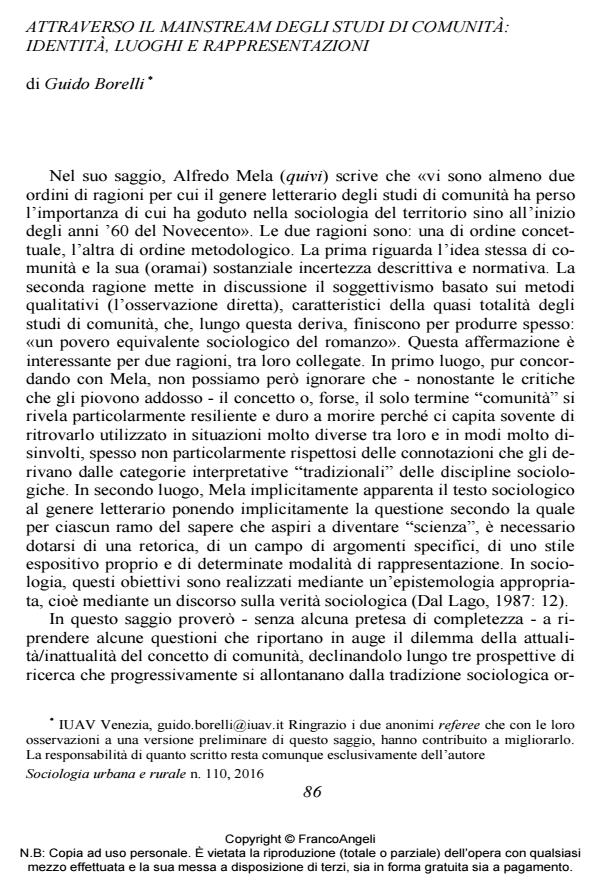Through the mainstream of community studies. Identity, places and representations
Journal title SOCIOLOGIA URBANA E RURALE
Author/s Guido Borelli
Publishing Year 2016 Issue 2016/110
Language Italian Pages 21 P. 86-106 File size 567 KB
DOI 10.3280/SUR2016-110007
DOI is like a bar code for intellectual property: to have more infomation
click here
Below, you can see the article first page
If you want to buy this article in PDF format, you can do it, following the instructions to buy download credits

FrancoAngeli is member of Publishers International Linking Association, Inc (PILA), a not-for-profit association which run the CrossRef service enabling links to and from online scholarly content.
The essay takes up some issues that bring into vogue the dilemma of actuality/irrelevance of the concept of community, declining it along three perspectives of research that gradually move away from orthodox sociological tradition: the collective identity, the genius loci and the literary representations. Starting from the increasing degree of freedom of social actors in defining and redefining in time and space their own personal and collective identity, and from the collapse of the belief - typically modernist - who considered the social and the spatial morphologies as functionally related to each other ("form follows function", according to the famous functionalist paradigm), in the conclusions the essay questions the possibility of accepting that some important ingredients for community studies could also be collected from the outside of the sociological mainstream. Considering that community studies represent a "specific literary" genre, the researchers should accept that the use of literary sources such as social analysis ethnographic supplement does not represent a vilification of the scientific quality of sociological text, because a fundamental requirement of community studies is «explain through storytelling».
Keywords: Community studies, collective identity, territorial identity, genius loci, literary representations, disciplinary mainstream.
Guido Borelli, Attraverso il mainstream degli studi di comunità: identità, luoghi e rappresentazioni in "SOCIOLOGIA URBANA E RURALE" 110/2016, pp 86-106, DOI: 10.3280/SUR2016-110007